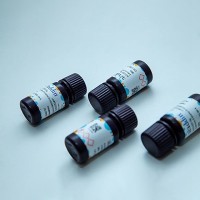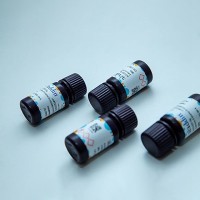A Quantitative Protocol for Intensity-Based Live Cell FRET Imaging
互联网
831
F�rster resonance energy transfer (FRET) has become one of the most ubiquitous and powerful methods to quantify protein interactions in molecular biology. FRET refers to the sensitization of an acceptor molecule through transfer of energy from a nearby donor, and it can occur if the emission band of the donor exhibits spectral overlap with the absorption band of the acceptor molecule. Numerous methods exist to quantify FRET levels from interacting protein labels including fluorescence lifetime, acceptor photobleaching, and polarization-resolved imaging (Lakowicz, Principles of fluorescence spectroscopy, 2006; Jares-Erijman and Jovin, Curr Opin Chem Biol 10 (5):409–416, 2006; van Munster and Gadella, Microscopy techniques, 2005). For live cell imaging, however, sensitized emission FRET (seFRET) is the most powerful and robust method of FRET signal quantification (Chakrabortee et al., Proc Natl Acad Sci USA 107 (37):16084–16089, 2010). It is fast, can be applied using straight forward microscopy equipment, and offers information not only on strength of interaction but, uniquely, also on the relative changes between interacting and noninteracting moieties in the reaction, referred to as FRET stoichiometry. A rigorous and quantitative application of seFRET is far from trivial, however, and requires appropriate calibration experiments and constructs, control over hardware settings, and appropriate image processing steps.
This protocol presents a rigorous method to perform quantitative seFRET measurements in live cells, providing the maximum possible information content from the measurement. The theoretical development and validation of the method is described in detail in Elder et al. (J R Soc Interface 6: S59–S81, 2009) where it is also demonstrated in the kinetic (“time-lapse”) analysis of protein interactions governing mitosis. The present protocol gives a detailed recipe for application of seFRET. It is written specifically for use with CFP (cyan fluorescence protein) as donor fluorophore and YFP (yellow fluorescent protein) as acceptor fluorophore, a popular choice for many experiments. The protocol is however valid for any other FRET fluorophore pair, and we indicate how to adapt the protocol in such situations. We also provide a software program that automates the calibration tasks outlined in this protocol and which is available for free to download (http://wiki.laser.ceb.cam.ac.uk/wiki/index.php/Resources ).









